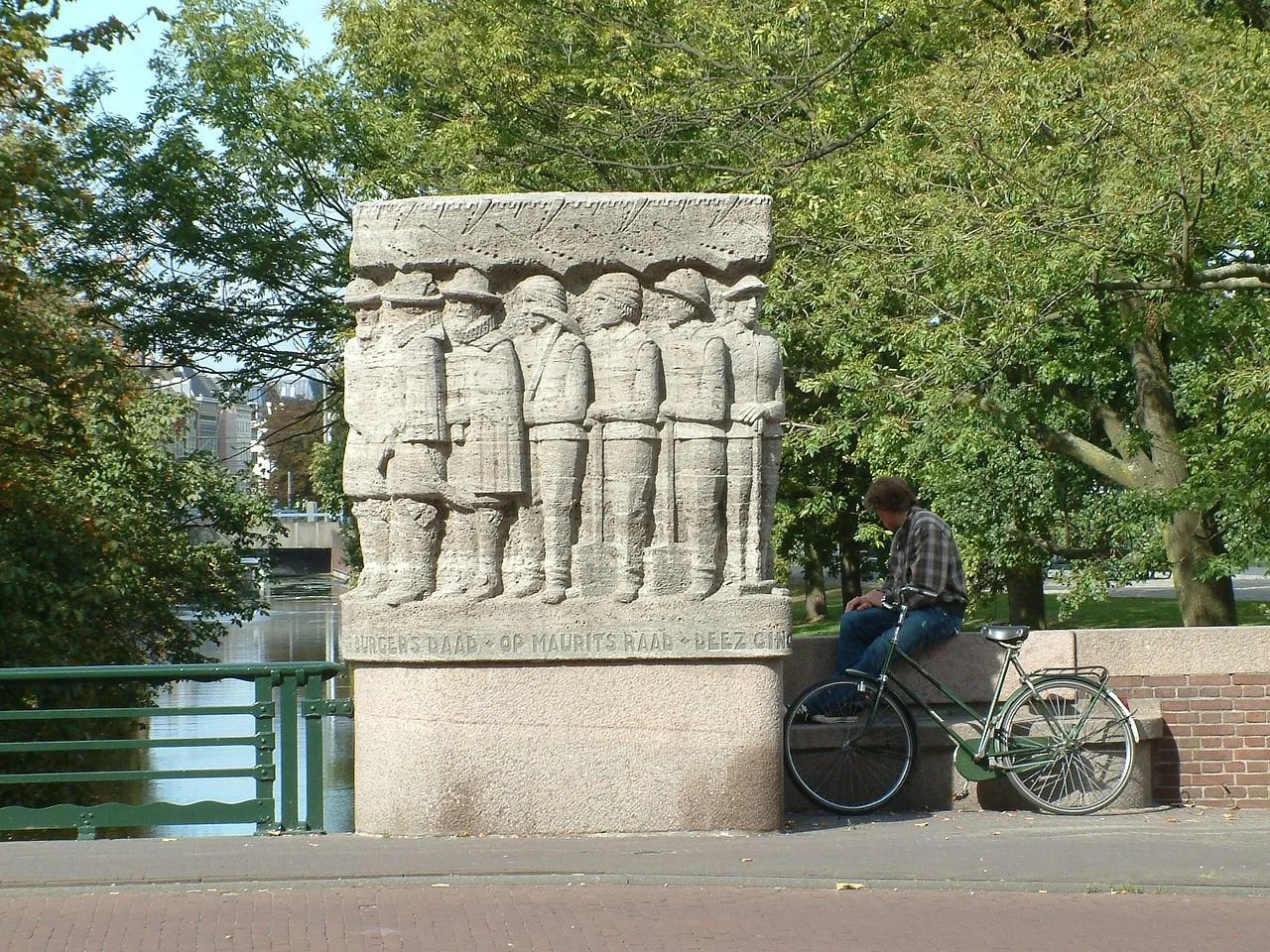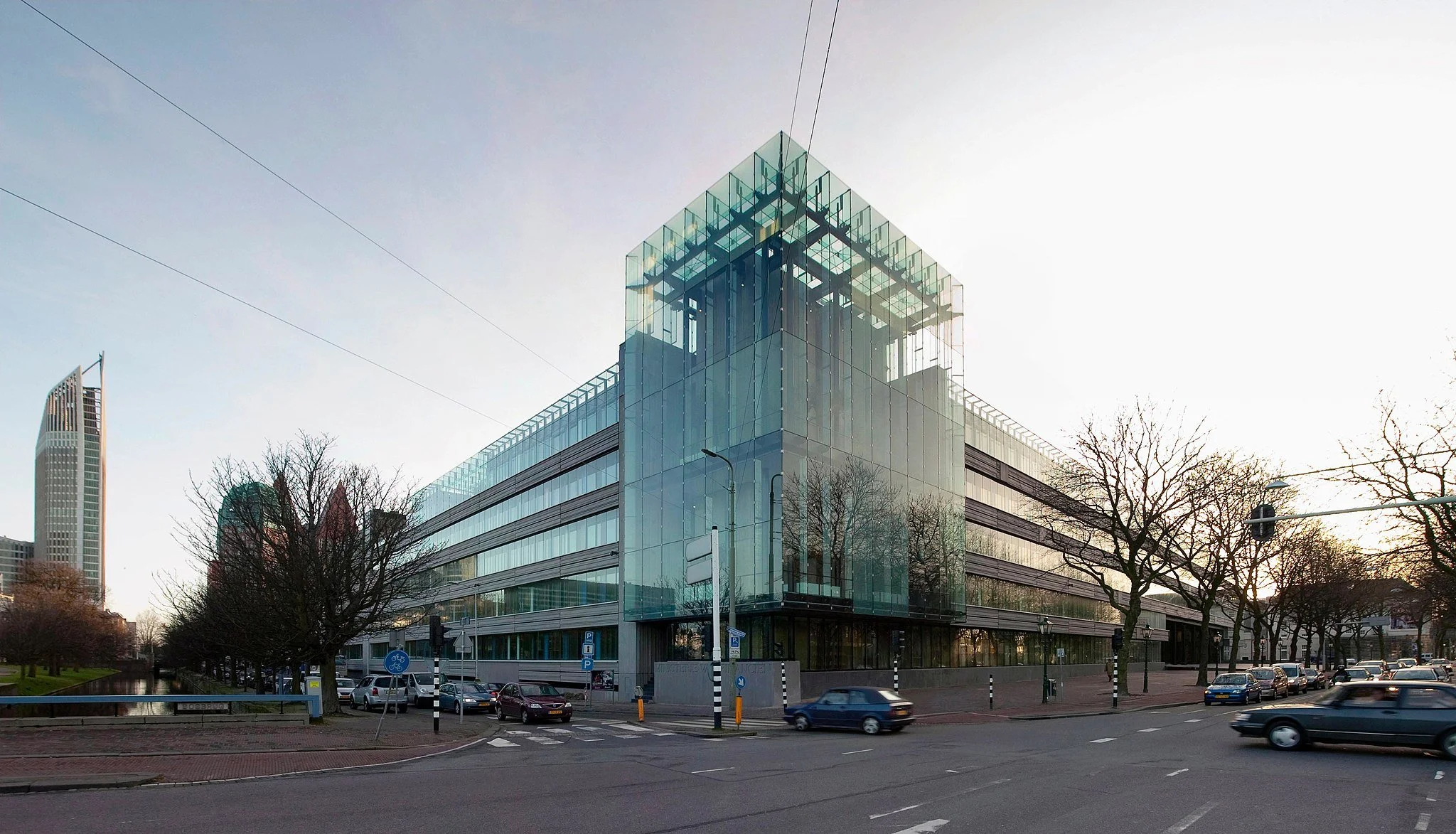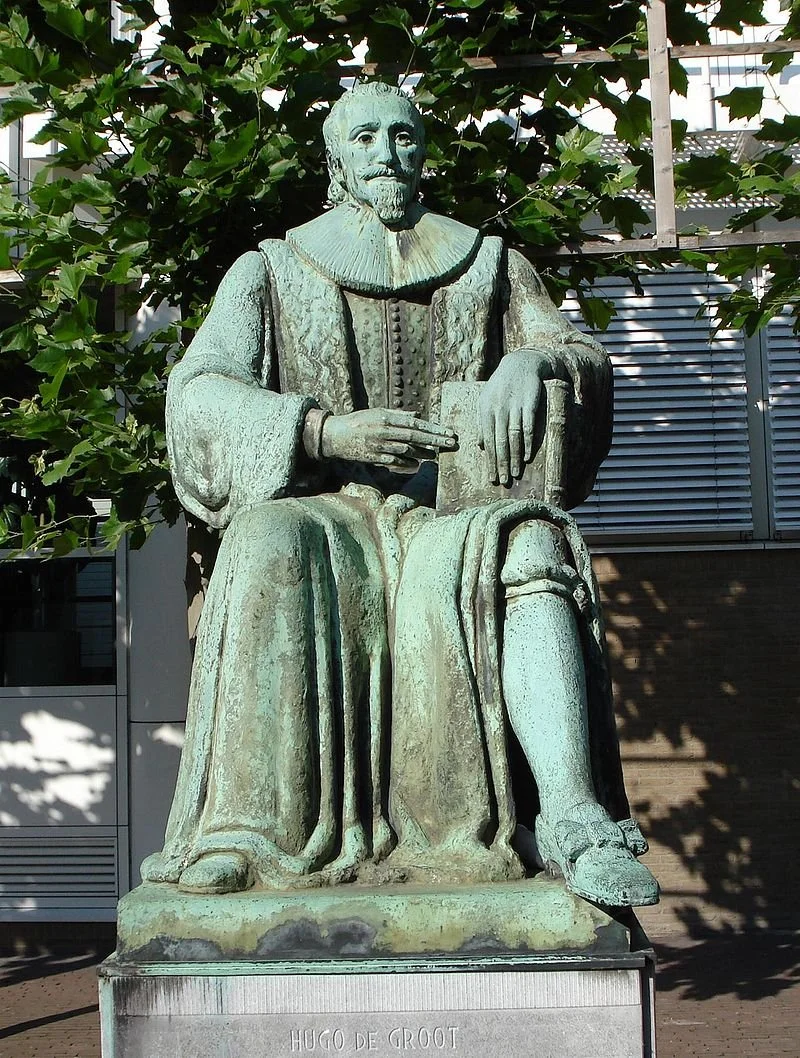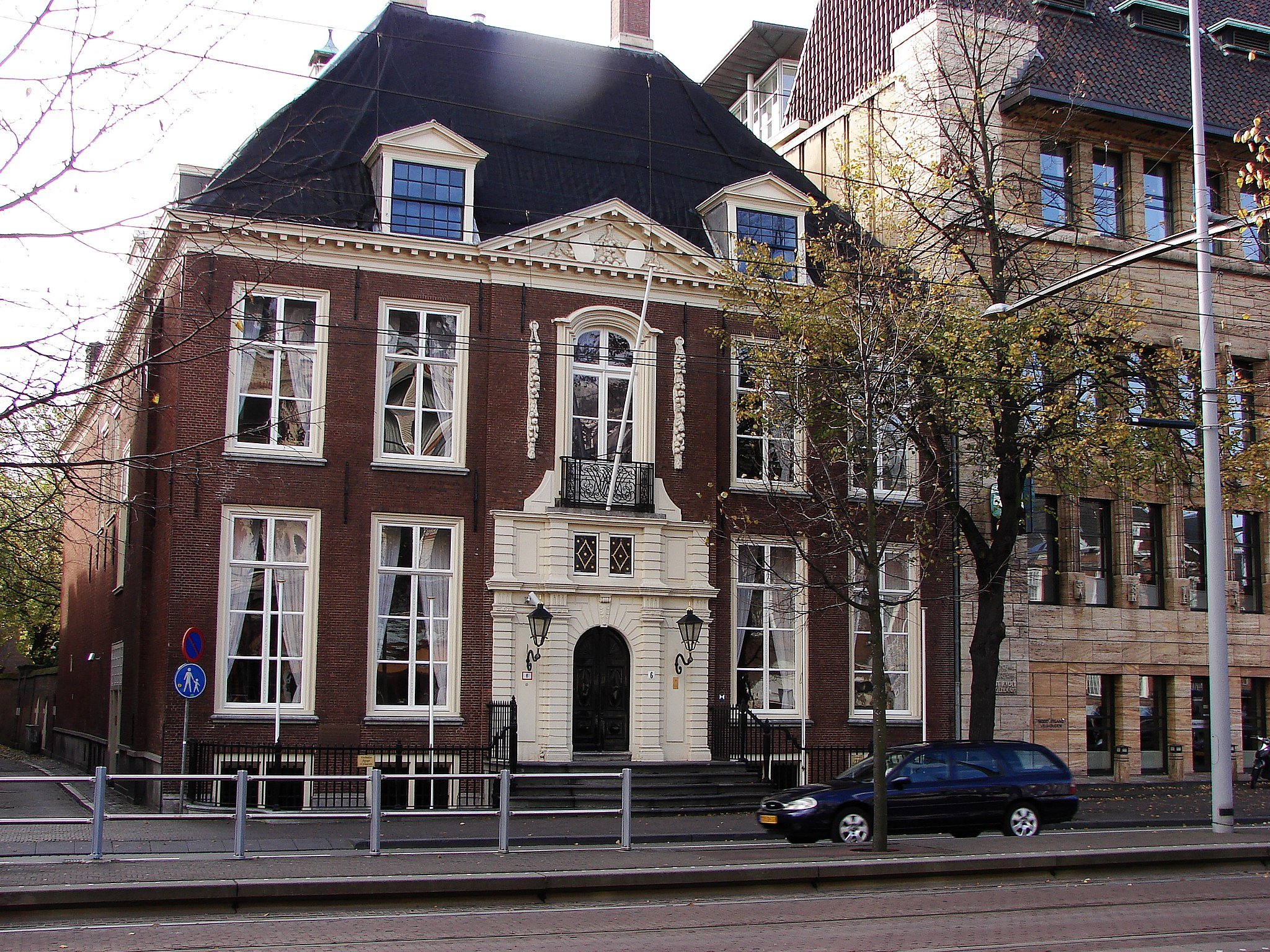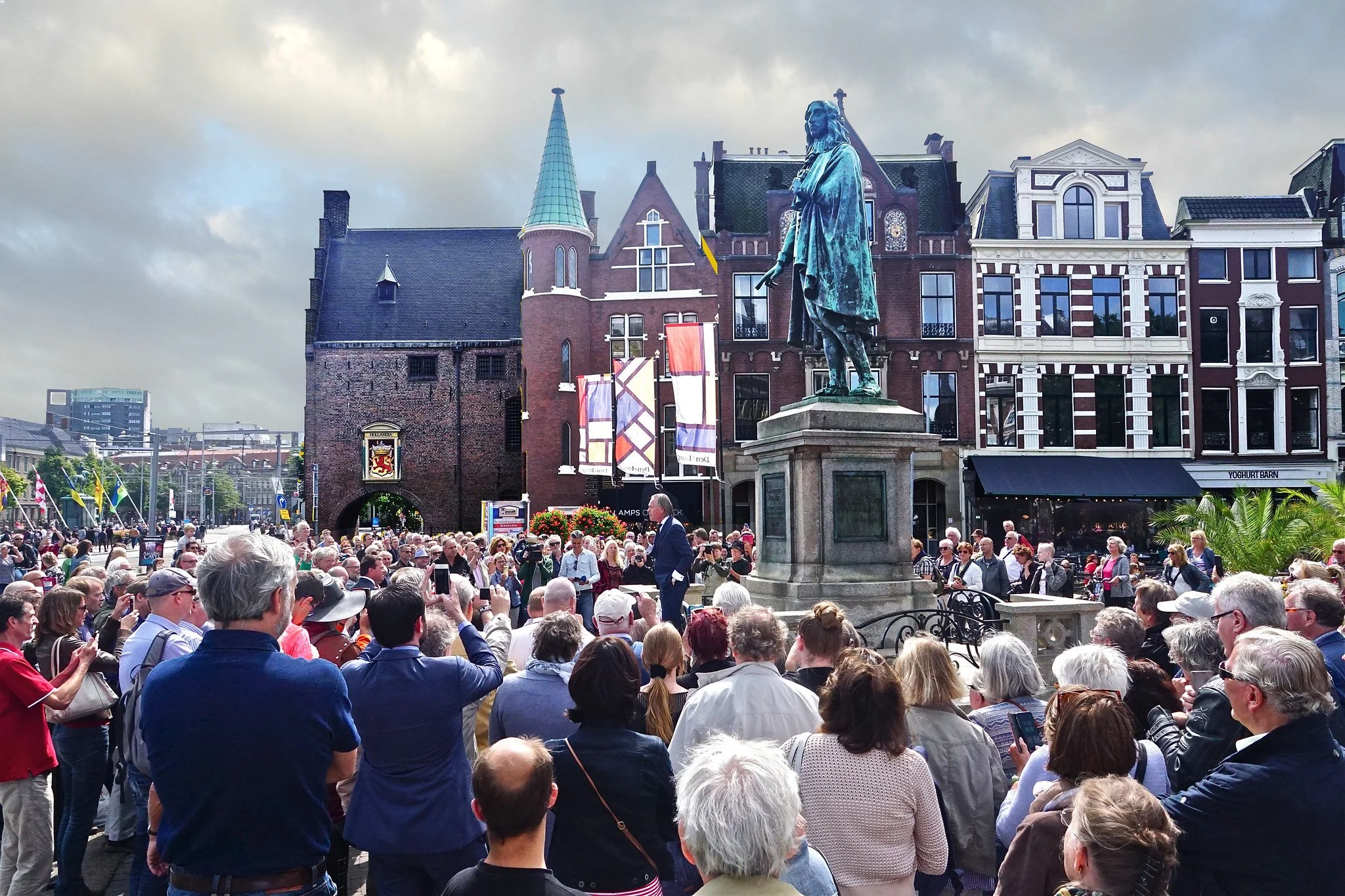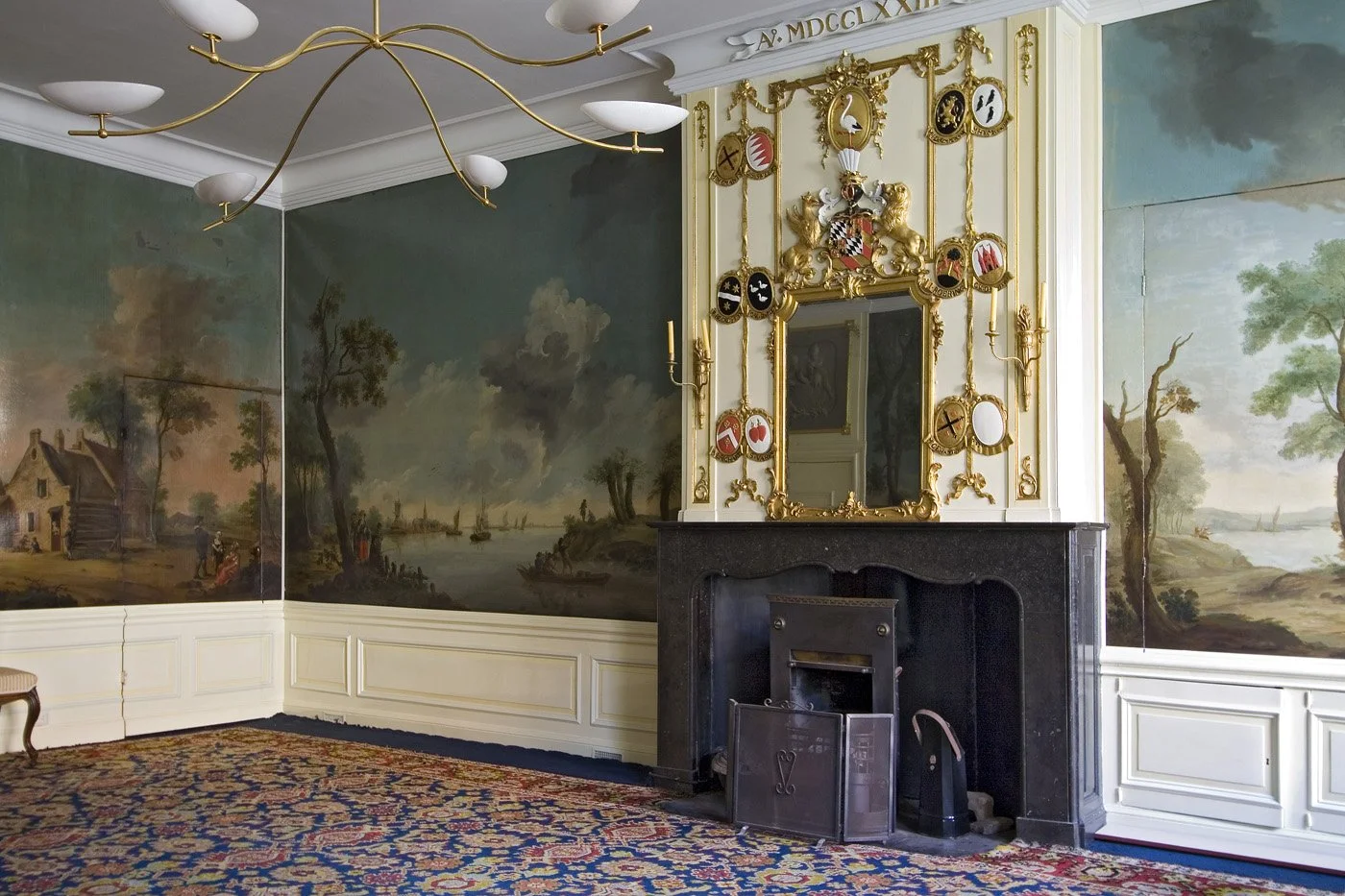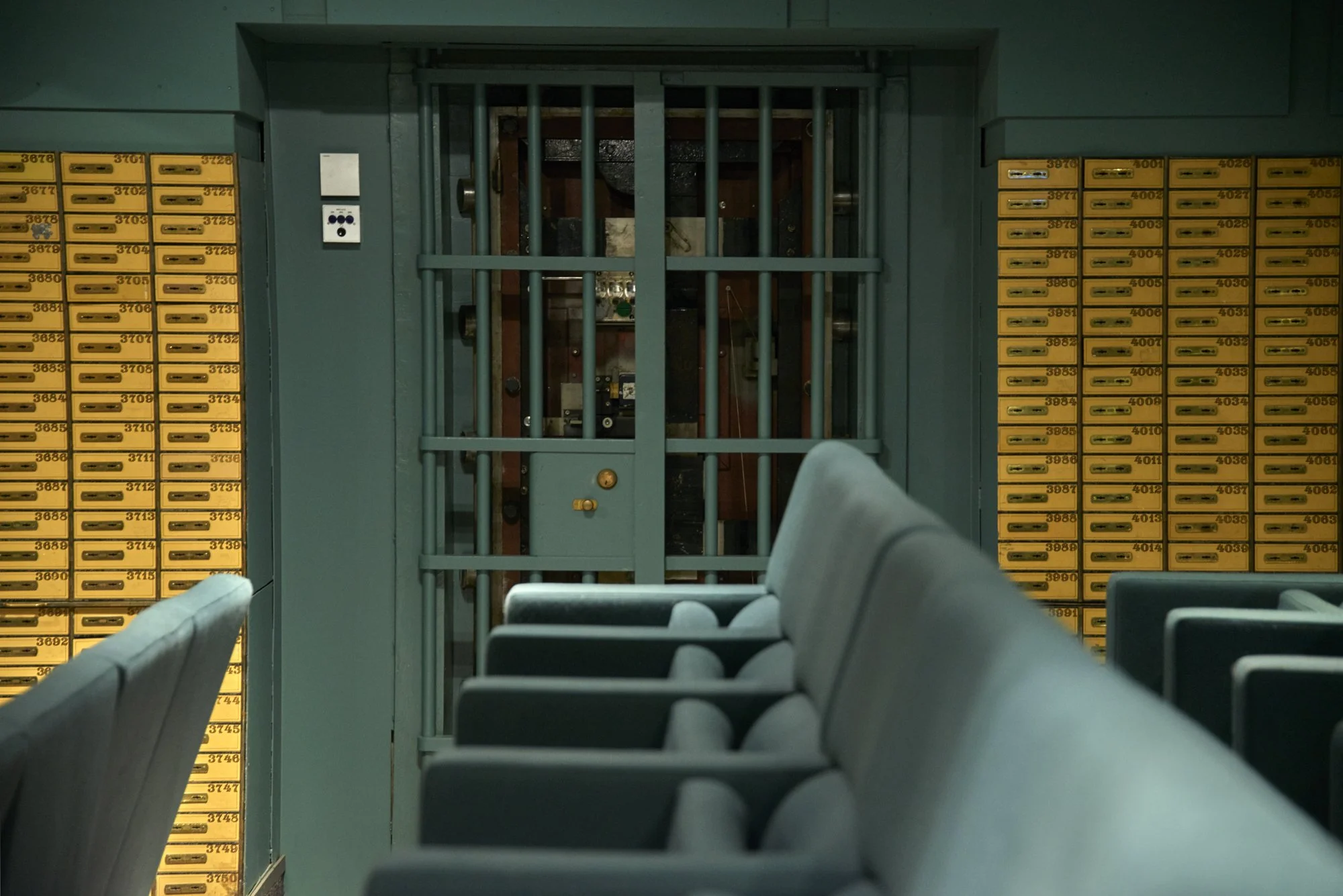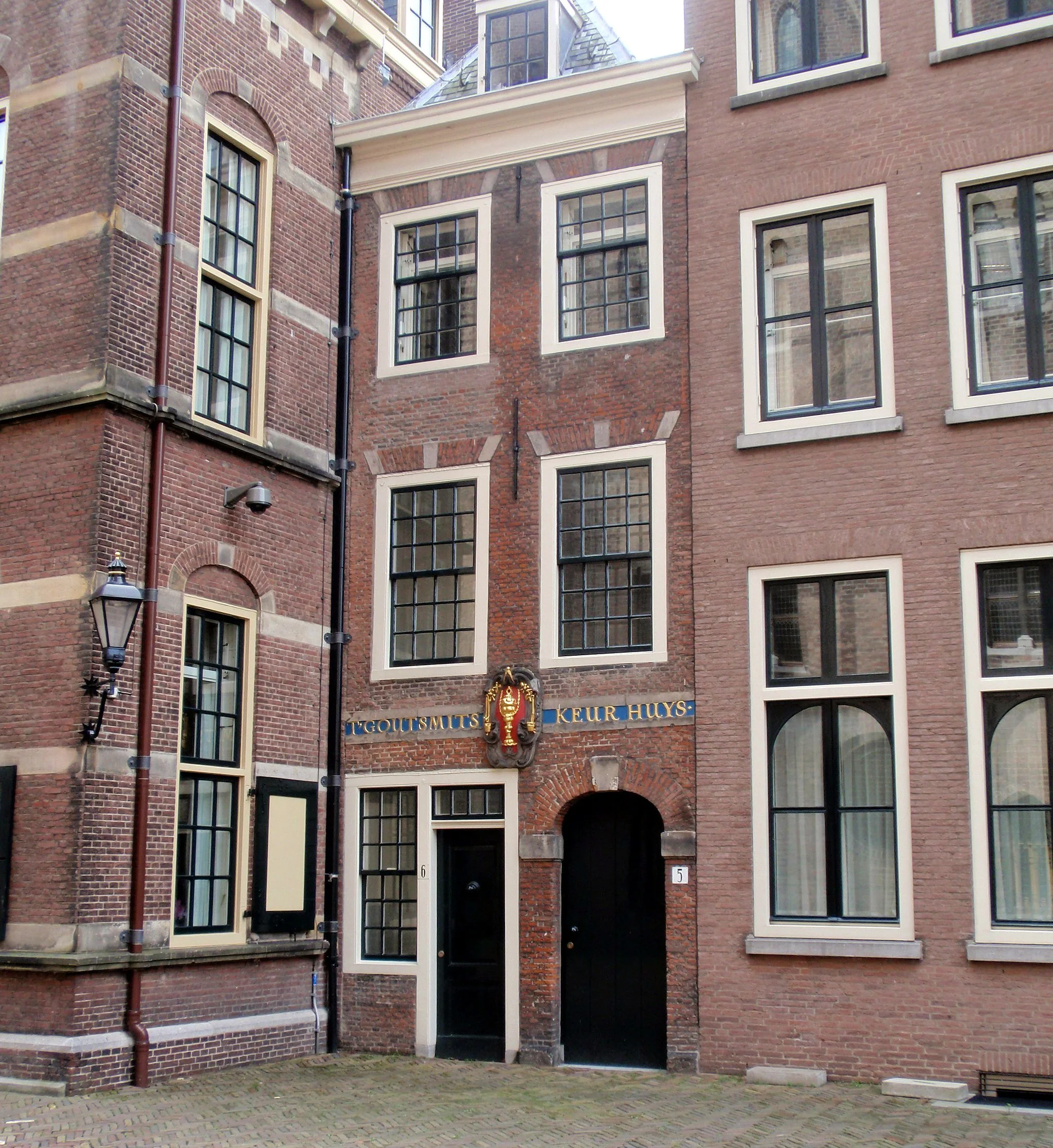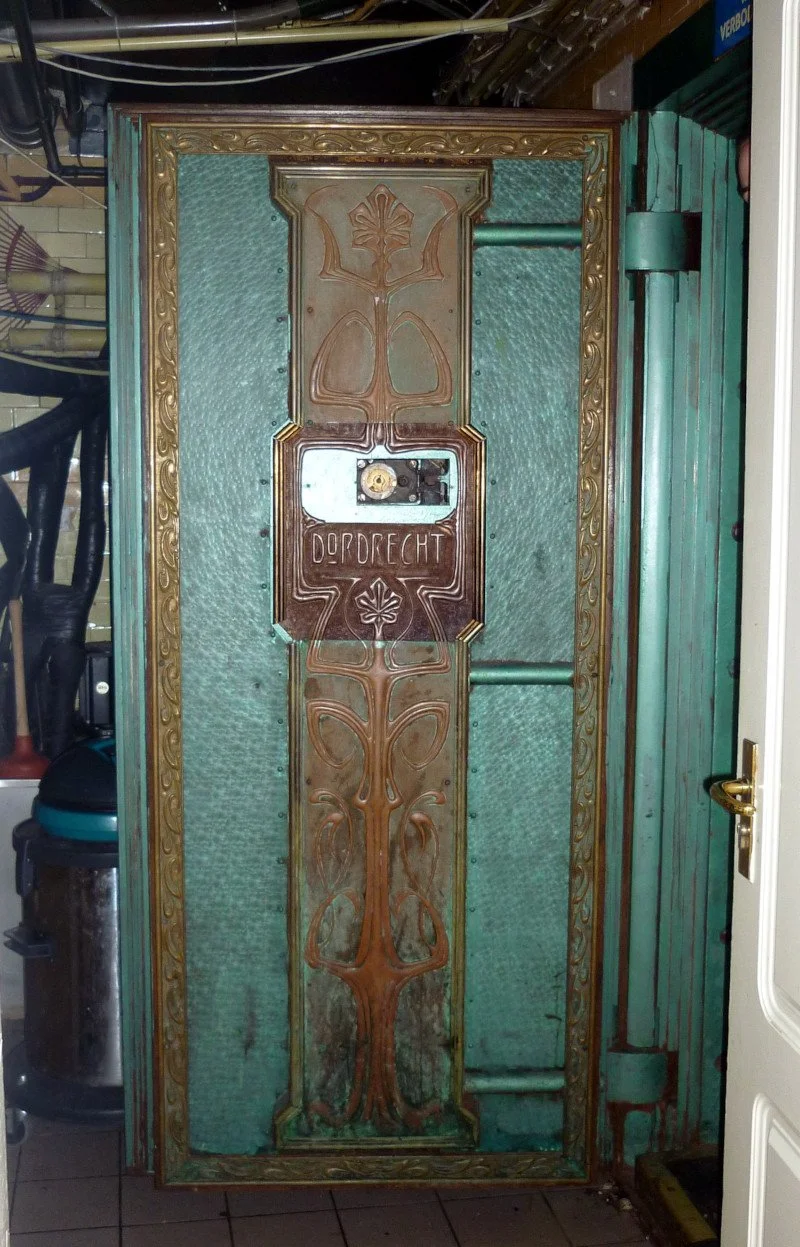Walking tour: The financial history of The Hague
Amsterdam is famous for its financial history: an important trading port for hundreds of years, it’s the birthplace of a variety of financial instruments and the seat of the Dutch Central Bank (DNB).
But the history of finance isn’t only about the development of financial tools and institutions. Trust in the legitimacy and honesty of the State and government institutions form the basis for the widespread acceptance of currency, the efficient functioning of financial markets, and the redistribution of value to society. These institutions and the people who embody them are at the heart of our tour. After all, The Hague is the seat of government in the Netherlands.
Since Finthropology is headquartered in The Hague, we thought it would be nice to give back to the community by creating a self-guided walking tour of some historical sites that are related to money and finance. We will visit government buildings and charities, as well as banks, insurance companies, and the old goldsmiths to trace the social history of finance in our home city. You can find the map below on Google Maps.
NAVIGATION POINT 1: Begin at the monument on the bridge over Princessesgracht on Bezuidenhoutseweg, near Den Haag Centraal Station.
Map of the tour. Visit this on Google Maps!
This monument on Princessegracht was designed by Johannes van Lunteren in 1932. It commemorates the people who built The Hague’s canals.
1. Prinsessegracht
Take a look around you. What do you see? At first glance you might think there is not much here that is relevant to money. But there is one thing that has shaped the history of finance in the Netherlands more than anything else: water.
Water is at the heart of the Dutch mindset. The Dutch learnt to reclaim land and manage flooding by operating collectively and spreading risk. Water management was carried out by each province individually, and this led to a bottom up culture of decision making. Water counties were actually the very first form of self-governing communities. And, most importantly, water facilitated trade.
The canals you see in front of you were built not only to transport goods and people around The Hague and to other cities, but also to protect the city, because it did not have city walls. They allowed trade to grow, and paved the way for The Hague to become an important centre of government.
The monument you are standing next to commemorates the building of The Hague’s canals by its people, between 1613 and 1619. It was created by the artist Johannes van Lunteren in 1932. The inscription says, “This canal was made by the citizens on the advice of Maurits”. Maurits was a member of the royal family and an important political figure in The Hague. He became the Prince of Orange in 1618, when he inherited the title from his brother. We will talk more about him later in this tour.
We will return to the theme of money and water as we move through the tour. For now, let’s continue to the next stop.
NAVIGATION POINT 2: Stick to the pavement and turn right along the canal. Follow the canal until the next traffic lights. The building to your left is the Ministry of Finance. Cross the street and stand outside the front entrance.
The Ministry of Finance in The Hague. Image by Imre Csany, CC0, via Wikimedia Commons.
2. Ministry of Finance
You are now standing between two institutions that reflect the twin roles of government and finance in The Hague: the Ministry of Finance in front of you, and the Supreme Court across the road.
More than any other building in The Hague, the Ministry of Finance represents the centralization of financial control in the Netherlands.
For hundreds of years, the provinces fought against the national government’s attempts to centralize finance, especially taxing businesses, controlling the circulation of notes and coins, and administering social welfare.
Before this centralization took place, the citizens and businesses of The Hague found their own ways to manage their finances, including stamping coins, controlling trade routes, and even inventing new ways to calculate interest.
Eventually a degree of centralization was achieved. In 1798, the national tax system was created and the Ministry of Finance was founded to oversee public expenditure. With its greater influence, it was able to extend its role. After WWII, it took over the role of providing social welfare, a task that was formerly dependent upon churches and philanthropy.
Today, the Ministry of Finance acts on behalf of the whole of the Netherlands to collect taxes, oversee the spending of government resources, make rules to ensure a stable financial system, and oversee the quality of financial institutions. It employs 1,500 people. The Ministry of Finance complements the work of the Dutch Central Bank in Amsterdam, which was created in 1814 to develop monetary policy.
NAVIGATION POINT 3: Now, cross the street to the Supreme Court. Head towards the statues and look for the one of Hugo de Groot.
Hugo de Groot at the Supreme Court of the Netherlands. Image by Wikifrits - Own work, Public Domain, https://commons.wikimedia.org/w/index.php?curid=7286341.
3. Supreme Court
Finance in the Netherlands cannot be understood without a reference to the role of law. The Supreme Court building is very new. It was only opened in 2016. While this building is brand new, the relationship between law and finance is very old.
Take a look at the statues in front of you. They are of famous legal figures in Dutch history. One of them is Hugo de Groot, a great lawyer born in 1583 who shaped the international laws of the sea that we still practice today. He argued that the sea was international territory and all nations were free to use it for seafaring trade. This helped the Dutch fight against the monopolies that other countries held over trade routes, and allowed the Dutch more easy economic expansion and transport than otherwise would have been the case. It is still the basis for law at sea.
Dutch scholars have also pointed out the relationship between law and money. In 1914, a Dutch economist called Herman Frijda published a dissertation called “The theory of money and the Dutch money system,” which explained why we accept money. One of his observations was that markets only work well if buyers and sellers are certain that their money has value and will be accepted as a means of exchange. This certainty is created by law and courts, and in particular the Supreme Court, which upholds contracts.
Now, take a look at the building. While it may seem quite ordinary, it includes many symbolic elements that represent the role of law in society. The building was designed by KAAN Architecten. Completed in 2016, It is 18,000 metres square and houses 350 staff members. The building is transparent to provide a sense that the court itself is transparent, open to the public, and uses sound judgement to decide on cases.
NAVIGATION POINT 4: Turn to your left and walk two blocks. You will reach a park covered in white pebbles and tall trees. Cross the park and walk diagonally through the trees to the street called Lange Voorhout. Follow the avenue of trees to number 8. Look for the building beside the British embassy with a flying Union Jack flag.
The Algemene Rekenkamer (Court of Audit) at Lange Voorhout 8, The Hague.
4. Court of Audit
The building in front of you has served many purposes. It was originally constructed as a house. In around 1404, the Count of Holland donated the building to the Order of the Dominicans, who founded a monastery there. Monks lived there until 1575.
Since 1868, it has housed the Netherlands Court of Audit (Algemene Rekenkamer). This institution has played a key role in the centralization of government finances in the Netherlands. One major barrier was that the provinces did not trust the central government to represent their interests. The Dutch Court of Audit oversees government spending on behalf of the entire nation. When they were first founded in 1447, they audited the king’s spending. Today, it is their job to assess whether funds are spent in a way that benefits all citizens.
A key point of interest in the Netherlands Court of Audit is the Grootboek Gebouw, or General Ledger Building, an extension built in 1884 to house duplicates of the national debt ledgers.
NAVIGATION POINT 5: Turn left and continue until you reach the end of Lange Voorhout, where the streets intersect. Turn left and cross the pedestrian crossing.
A sculpture of a ship on top of the building De Zeven Provinciën. Image by Marion Golsteijn, CC BY-SA 4.0 <https://creativecommons.org/licenses/by-sa/4.0>, via Wikimedia Commons.
5. De Zeven Provinciën
In front of you is a building called The Seven Provincien (look for the sign saying BarentsKrans), an insurance business established in 1918 in Amsterdam by several ship owners, shipping companies and investors. The main goal at the time was to take out marine and transport insurance. The company moved to The Hague in 1942. Note the replica of the 17th century ship on the front of the facade.
NAVIGATION POINT 6: Turn right and follow the pavement as you veer to the left following the street. Across the street, on your right is a sandstone Art Deco building. You’ve reached the ABN Amro Building.
The former ABN Amro building (now a hotel) on Kneuterdijk. Image by Pvt pauline, CC BY-SA 3.0 <https://creativecommons.org/licenses/by-sa/3.0>, via Wikimedia Commons.
6. ABN Amro building
This art deco building at Kneuterdijk Number 8 is now a hotel called Botanica. Formerly it was was the head office of the Dutch bank ABN Amro from 1923 to 2016. It was designed by architect H.F. Mertens, who built banks in several cities around the Netherlands, including Assen, Emmen, Gouda and Zutphen. This building is from his expressionist period.
On the left hand side of the building is an inscription that says: “Here stood the house where in 1813 the restoration of the country's independence was planned, led by Gijsbert Karel van Hogendorp”. Van Hogendorp was a politician, and this was his home. It was on this site that a temporary government was formed at the end of French rule.
In the 17th century, the house was occupied for some time by members of the de Witt family. The de Witts were a highly influential family in Dutch politics.
NAVIGATION POINT 7: Walk a few metres to the house directly to the left of the ABN Amro building, No.6.
The former residence of Johannes de Witt. Image by Pvt pauline, CC BY-SA 3.0 <https://creativecommons.org/licenses/by-sa/3.0>, via Wikimedia Commons.
7. Witthuis
Known as the Witthuis, this house was built in 1653 by architect Mattheus Hoeufft, Jr. in the Dutch classic style. It was rented by the statesman Johan de Witt from 1669 until his death in 1672.
Johan de Witt was also a mathematician who developed financial tools. Interestingly, De Witt’s work combined his roles as statesman and mathematician. Ever since the middle ages, life annuities were popular as a way to obtain a regular income. For example, a widow could pay the state a lump sum and receive a regular income until her death. De Witt showed that the government was miscalculating interest payments, and, in fact, overpaying people. De Witt’s publication on the issue has been referred to as "one of the first applications of probability in economics." De Witt continued to work on calculating annuities relative to mortality probabilities. His work laid the foundations for important aspects of modern financial economics, such as contingent claim pricing and risk-neutral valuation.
NAVIGATION POINT 8: Facing the Witthuis, turn to your left and continue straight on until you reach the VOC building on the corner.
The vault of the Netherlands Trading Society. Image via I Amsterdam.
8. Netherlands Trading Society
You are now standing in front of the Netherlands Trading Society (Nederlandsche Handel-Maatschappij), a trading company established by King William the First in 1824. Note the anchor and seal in the doorway. The building’s basements are full of vaults, a testament to its banking history.
The purpose of this society was to develop shipping, trade and agriculture. Over the next century and a half, the Society developed a large network of branches throughout the Netherlands, and they increasingly offered banking services. In fact, they are one of the main ancestors of ABN Amro when it merged with the Dutch Twentsche Bank in 1964 to form the Algemene Bank Nederland—the ABN part of ABN Amro.
Today the building houses the Council for the Judiciary.
NAVIGATION POINT 9: Turn to your right and across the street you will see a statue in the square. Cross the street and stand near the statue.
A statue of Johannes de Witt in Plaats. Image by Roel Wijnants via Flickr.
9. Plaats
Much of the drama of the de Witt family played out on this spot, Plaats, one of The Hague’s oldest public squares. The statue of Johann de Witte in the centre of the square attests to this history. Look at the old prison building with the turret. In 1672, Johann de Witt came to the prison to meet his brother Cornelis, who was being released. Cornelis had been imprisoned on false accusations of treason. An angry mob attacked them and killed them both. Johan de Witt’s finger is still on display in The Hague History Museum.
Plaats is the home to many other dramas. A banker called William Snikerieme used to have a house here. By 1316 he was so rich that he was able to make loans to the count, King of England, Archbishop of Cologne, and yet more notable figures.
Another interesting story concerns Catherine de Chasseur, the daughter of an innkeeper who got involved with Gerrit van Assendelft (President of the Court of Holland) while he was staying in Orleans. Her father insisted on marriage but van Assendelft attempted to abandon her and return to the Hague. She followed with their young son Nicholas. She wasn’t welcomed by his mother and a legal separation ensued. She moved to a house on the Kneuterdijk. In 1541, she was found guilty of forging coins. She was sentenced to public death by fire, but Gerrit pleaded with Mary of Hungary (at that time Regent of Holland), who reduced the sentence to private death by water (in Gevangenpoort Prison). Her story (and that of her ghost) is told in the book Die Haghe by former British ambassador to The Hague, Sir Peter Garran.
NAVIGATION POINT 10: With the statue in front of you and the prison on your left (the one with the archway with a royal seal of Hollandia), walk across the square towards the shopping street. When you reach the street, turn left and immediately turn right unto Papestraat. Walk straight until the intersection, then turn right. Stop at number 25 on your right.
Inside the Oude Mannenhuis. Image by Erin B. Taylor.
10. Oude Mannenhuis
This house at Oude Molenstraat 23-25, built in 1772, is called the Oude Mannenhuis, or old men’s house. This house was built in 1772 thanks to money bequeathed by a local lord, Jacob Frederik Baron van Beijeren van Schagen, who died in 1724. It operated as a home for elderly Protestant men for over two hundred years.
Charity has a very long history in the Netherlands. Long before government institutions took charge of taxes and created public services, churches and philanthropists funded all kinds of charities for those who were worse off. Possibly one of the most famous of these is the hofje, a group of houses built around a central courtyard. These were mostly constructed in the 17th and 18th centuries, and were inhabited mainly by poor women over the age of fifty. There are several hofjes in The Hague and many of them are open to visitors on Open Monument Weekend in September.
But elderly men also needed somewhere to go. Because it was thought that elderly men were less able to look after themselves than women, old men were put in houses like this one, where they had their own room rather than an entire house to themselves. The servants would do the cooking and cleaning. Rules were rather strict: the men were not allowed to eat in their rooms or light a fire.
The last sixteen residents of the Oude Mannenuis moved to other retirement homes in 1979 and the building shut its doors. The building is currently owned and run by the Noodopvang Haaglanden Foundation, which provides emergency accommodation for families of The Hague.
NAVIGATION POINT 11: Turn around and return the way you came. Cross the intersection and walk straight ahead until you reach the tram line. Then, turn right. Stand in front of the building housing the Greek restaurant Knossos. The building you see in front of you is the insurance company. Note the city seals on the side of the building.
The insurance company De Nederlanden released a board game in 1945 to commemorate their 100 year anniversary.
11. Insurance company “De Nederlanden”
This interesting building was built in 1895 for an insurance company called De Nederlanden.
Carel Henny, the director of the company, commissioned architect Hendrik Petrus Berlage to design their head office in The Hague. It was built in the years 1895-1896 in an L-shaped Art Nouveau style, initially limited to two floors following the building tradition in the Hague.
In the facade of the building, you can see the 13 coats of arms of the cities and countries that De Nederlanden did business with. The sculptures on the building depict the Fire Devil, a Woman with a House, Death and Time, all indicating things that need to be insured.
The company began by offering regional funds to help people from certain villages, professional groups, widows and orphans during calamities. These included the Funeral Fund and the Shoemakers Funds. These small companies were taken over by the Nationale-Nederlanden (NN) during the 19th to 20th centuries.
The business had grown tremendously by 1900, so Henny asked Berlage to create an extension and add another floor to the building. By that time, Berlage was no longer using the Art Nouveau style and so the top floor appears different. The tower facing the town hall side and the larger tower with the clock on the courtyard were part of this extension. They symbolically linked the building to the Beurs van Berlage (stock exchange) in Amsterdam.
In 1945, the company released a board game called “1845” to commemorate their 100th anniversary. The aim of the game was to teach families about insurance, and it can still be purchased today. It is a snakes and ladders-style game in which players buy different kinds of insurance to prevent disaster or make money. Players have to choose their insurance at the beginning of the game. Players need to have certain insurance to avoid major personal disasters. The one with the most money after turning 100 years old, wins. The game was re-released several times. Its popularity reflects the importance of insurance to the Dutch people.
NAVIGATION POINT 12: If you are facing the building, turn around and head to the church square. Cross the tram line and square, keeping the church to your right. Facing you is the old market hall with the yellow painted star. On that street turn right.
The vault of the Nutsspaarbank is now a theatre. Image via the Nutshuis.
12. Nutsspaarbank
The Nutshuis at Riviervismarkt 5 is the former head office of the non-profit Nutsspaarbank. It was constructed in 1919-1921. By this time, the Nutsspaarban was already over a hundred years old: it was founded in 1818. The building was the head office of the Nutsspaarbank from 1921 until 1992.
The building was designed by the architect De Clercq. The site was purchased in 1913, but construction was delayed due to WW1. It took 116 weeks to construct the building due to labour strikes. The original design was altered substantially to save on building materials. However, they nevertheless installed new oak furniture, modern central internal telephone exchange, a vacuum cleaner, and a clock system. The basement contains over a thousand old bank safes locked behind two solid doors. Today, the brass vaults contain a small cinema and a lobby with a capacity of 50 people.
This bank is important because its aim was to encourage a savings culture among the Dutch working class in the early 1800s. It was founded by The Hague Department of the Society for Public Welfare. The elites were concerned with widespread poverty and also that working men were drinking up their salaries. They wanted to provide an easy way for everyone to save money. Until this time, banks had been too expensive for ordinary people to use. A man from Amsterdam called Reinhard Scherenberg is credited with developing the bank. Scherenberg was an advisor to King Willem I on poverty reduction. He started the bank not to boost the economy or create consumers, but to prevent further impoverishment. People could put money aside for illness or old age, or take out loans. The Nutsspaarbank promoted savings for over 150 years.
NAVIGATION POINT 13: Turn and walk in the direction you came from, keeping the church on your left. You will also see the old Stadhuis on your left, with its red shutters.Keep walking straight ahead. You will walk past 't Gouden Hoofd, the oldest inn in The Hague. Continue straight on. You will see the parliament building ahead of you. Cross the plaza and the main road so that you are outside the parliament.
The Goudsmit Keurhuys is inside the Binnenhof. Image by Effeietsanders, CC BY-SA 3.0 NL <https://creativecommons.org/licenses/by-sa/3.0/nl/deed.en>, via Wikimedia Commons.
13. Binnenhof
Next, we come to the Binnenhof. This is the mansion founded by Count Floris in 1230. It is now the Dutch parliament, containing both the Senate and House of Representatives, as well as the offices of the Prime Minister.
Unfortunately, the Binnenhof is closed for renovations until 2026, so you can’t go inside.
The castle-like structure in the middle is called the Ridderzaal, which means Knight’s Hall. The land on which the Hall sits was purchased by Count Floris IV in the 13th century. He died before the building could be completed. Instead, it was finished by his son, Count Floris V in 1280. It is the centrepiece of what used to be a castle. The Knight’s Hall has had many uses over the centuries, including as a lottery hall during the French occupation, a book market and as an exercise room for cadets.
The Knight’s Hall was renovated in 2006, and today it is used for state ceremonies, including the opening of parliament every year on the 21st of September. This is called Prinsjesdag, or Prince’s Day, in Dutch, but is referred to as Budget Day in English. The ceremonies begin with the Head of State travelling from the Royal Palace to the Knight’s Hall in a golden coach with horses. Crowds of people gather along the route to see the king pass by. Once he arrives at the Knight’s Hall, the King gives a speech called the Toonrede, or Throne Speech, because he delivers it while sitting on the throne, a custom that began in 1904. The Minister for Finance also plays an important role. They carry a ceremonial briefcase to the Ridderzaal that contains the budget memorandum, which lays out the government’s costs for the year. The Minister reads this to the audience. Then the House of Representatives reads the budget. This whole event is shown on national television.
Also in the Binnenhof, behind the Ridderzaal, is a former goldsmith called the Goudsmidt Keurhuys. It was built in the 17th century (around 1640) by the guild of gold and silversmiths. This guild operated until 1796. The Guild was the wealthiest one of The Hague. The building was used to check the quality of their work for its artisanal quality and precious metal content.
Look at the building’s facade and the inscription on it. There is a mistake in the text. Can you spot it? The apostrophe should come before the t (‘t), not after (t’).
NAVIGATION POINT 14: Walk around the Binnenhof to reach the Mauritshuis.
The Mauritshuis museum, also known as the Sugar Palace. Image by "Foto Wolfgang Pehlemann" direkt unter dem Bild mit Angabe "erweiterte Lizenz CC-by-sa V. 3.0", CC BY-SA 3.0 DE <https://creativecommons.org/licenses/by-sa/3.0/de/deed.en>, via Wikimedia Commons.
15. Mauritshuis
This city palace (now a museum) was designed by Jacob van Campen en Pieter Post for Count Johan Maurits of Nassau-Siegen, who was the Governor General of Dutch Brazil from 1636-1644. Count Nassau-Siegen moved into the house when he returned from Brazil in 1644. However, after only three years, he relocated to Germany and only stayed in the house when he visited The Hague. He rented the house out to the State as temporary accommodation for important guests. In 1822, the building was converted into the museum you see today.
The Mauritshuis uses elements from classical architecture, such as columns, capitals, cornices, and timpans. The mortgage of the building in the 1660s amounted to 160,000 guilders, which was a huge sum. For comparison, at the time a skilled craftsman earned 250 guilders per year—640 times less than the mortgage of the Mauritshuis.
The Mauritshuis is sometimes called the “Sugar Palace”. This is in part a reference to the light-coloured stones that you see on the building’s façade. But it also refers to the origins of Maurits’s money. In Brazil, Maurits worked with the West Indies Company, which captured northeastern Brazil from the Portuguese, motivated by the profitable sugar mills and plantations. During Maurits’s rule, 24,000 enslaved Africans from West and Central Africa were transported to Brazil. Maurits profited enormously from this trade, and used his money to build the Mauritshuis. Today, the museum has a permanent hall dedicated to his complicated legacy.
NAVIGATION POINT 15: Continue on and enter the square. Stand near the statue.
The vault door of former bank De Haagse Kluys. Image by Pvt pauline, CC BY-SA 3.0 <https://creativecommons.org/licenses/by-sa/3.0>, via Wikimedia Commons.
15. Het Plein
This bustling square, Het Plein, or The Square in English. It has been a fashionable centre for socializing and trading for hundreds of years. It was built in 1632 to resemble the Place des Vosges in Paris, and was originally a walled vegetable and ornamental garden belonging to the Mauritshuis.
Het Plein contains numerous notable buildings. At Plein 20 is Café De Haagsche Kluis (Plein 20), a former bank and meet-up place. It was built in art deco style in 1905 for the stockbroker H. Edersheim. He had his office on the ground floor, and in the basement was a reinforced safe. He and his family lived above the offices. In the garden, they had their own synagogue with a beautiful painted ceiling, like you would find in a church. The family departed due to the start of World War II. In the 1950s, statesman Joseph Luns had his office there. He was the longest-serving Dutch Minister of Foreign Affairs, holding his position from 2 September 1952 until 6 July 1971.
An old 100 guilder note.
We hope you have enjoyed this tour. If you’d like to learn more about The Hague we recommend you visit The Hague History Museum, located just around the corner from Het Plein. If you’re interested in learning more about Dutch financial history, you can visit the website of Financieel Erfgoed. Do get in touch and let us know what you thought of the tour.
This tour was produced with the assistance of Dr. Melanie T. Uy, an anthropologist and service deisgner based in Delft, and Simon Leliveldt, payments expert and founder of Financieel Erfgoed. Many thanks also to Dr. Diny van Est and her colleagues at the Algemene Rekenkamer.


